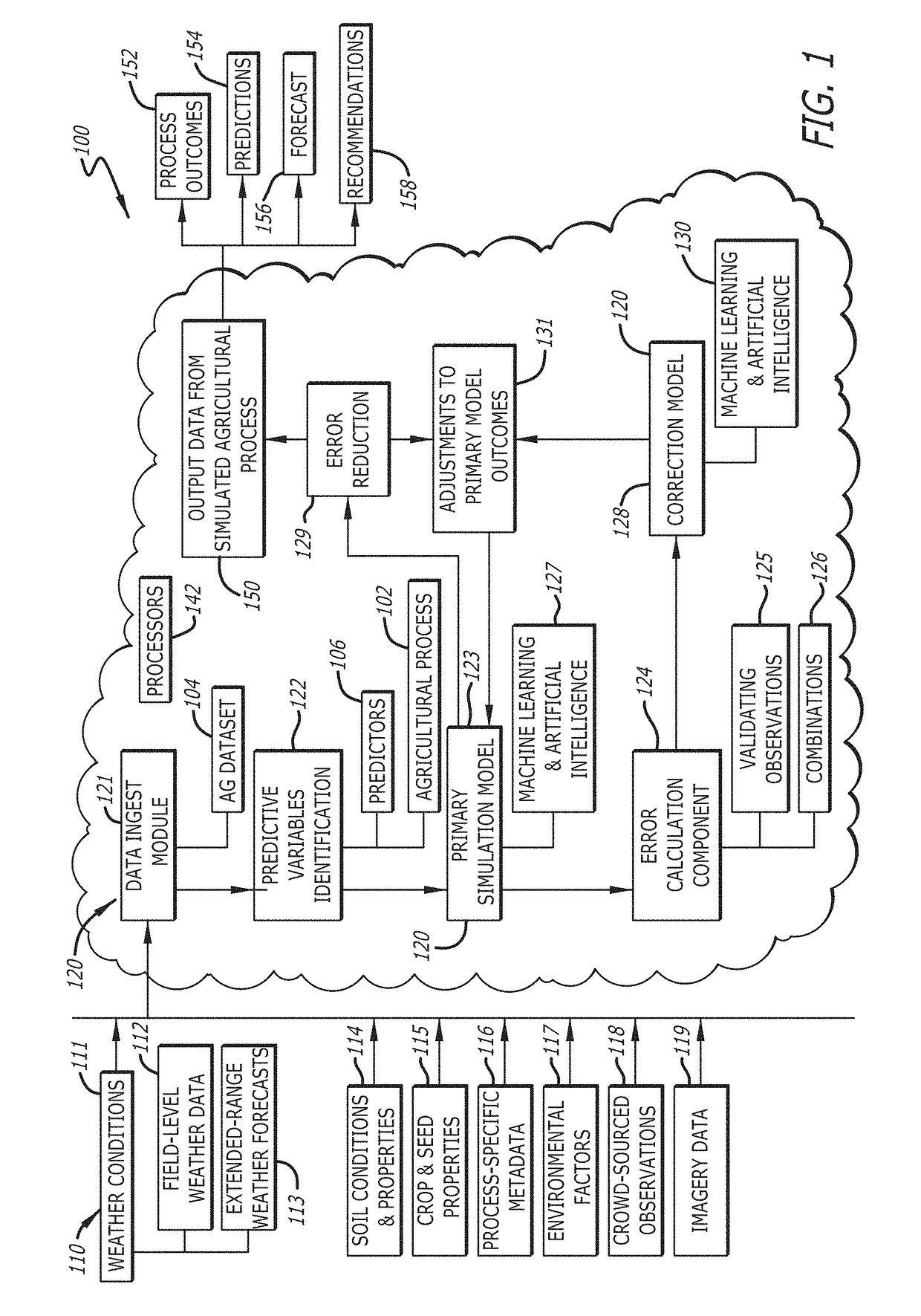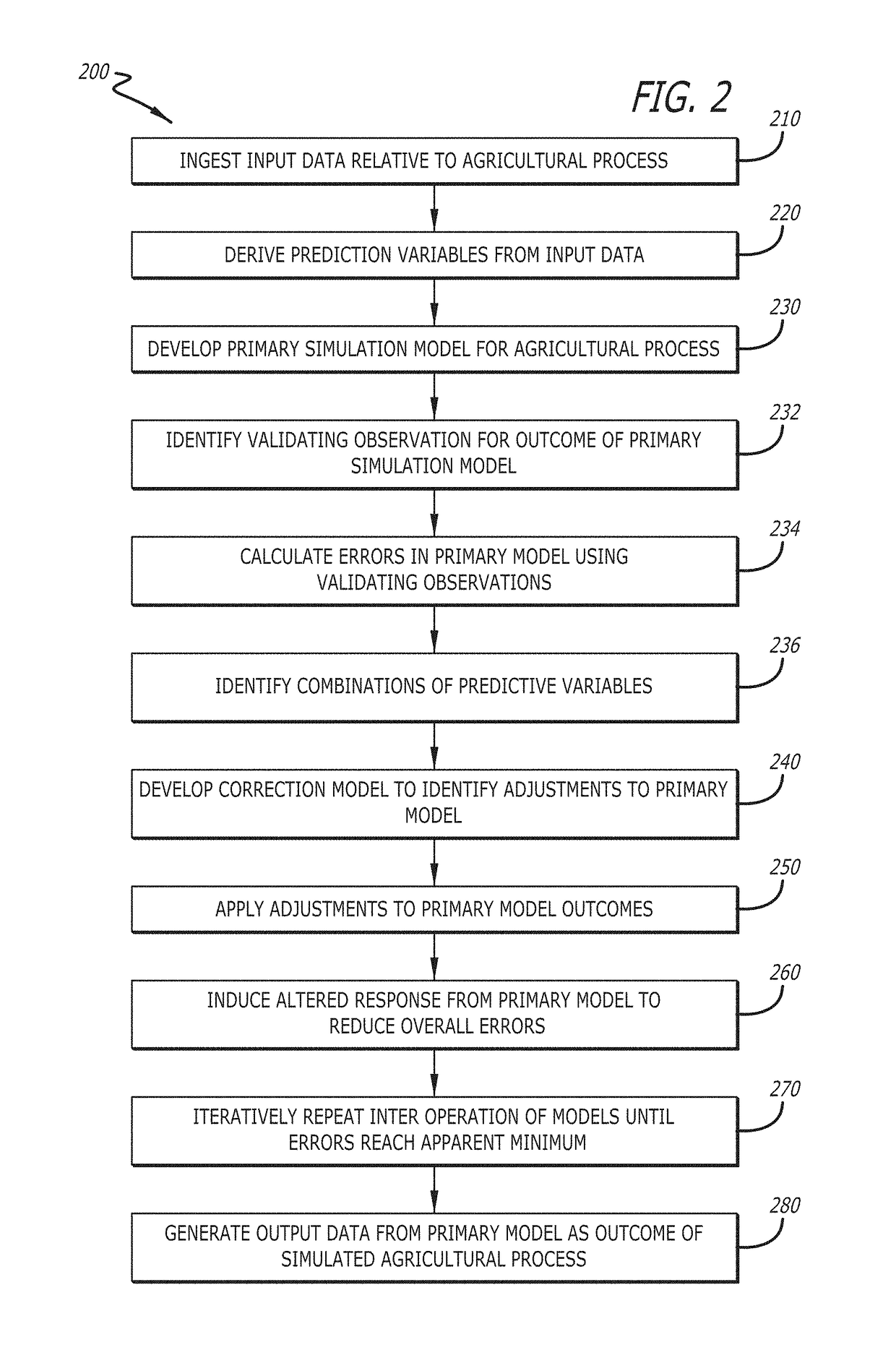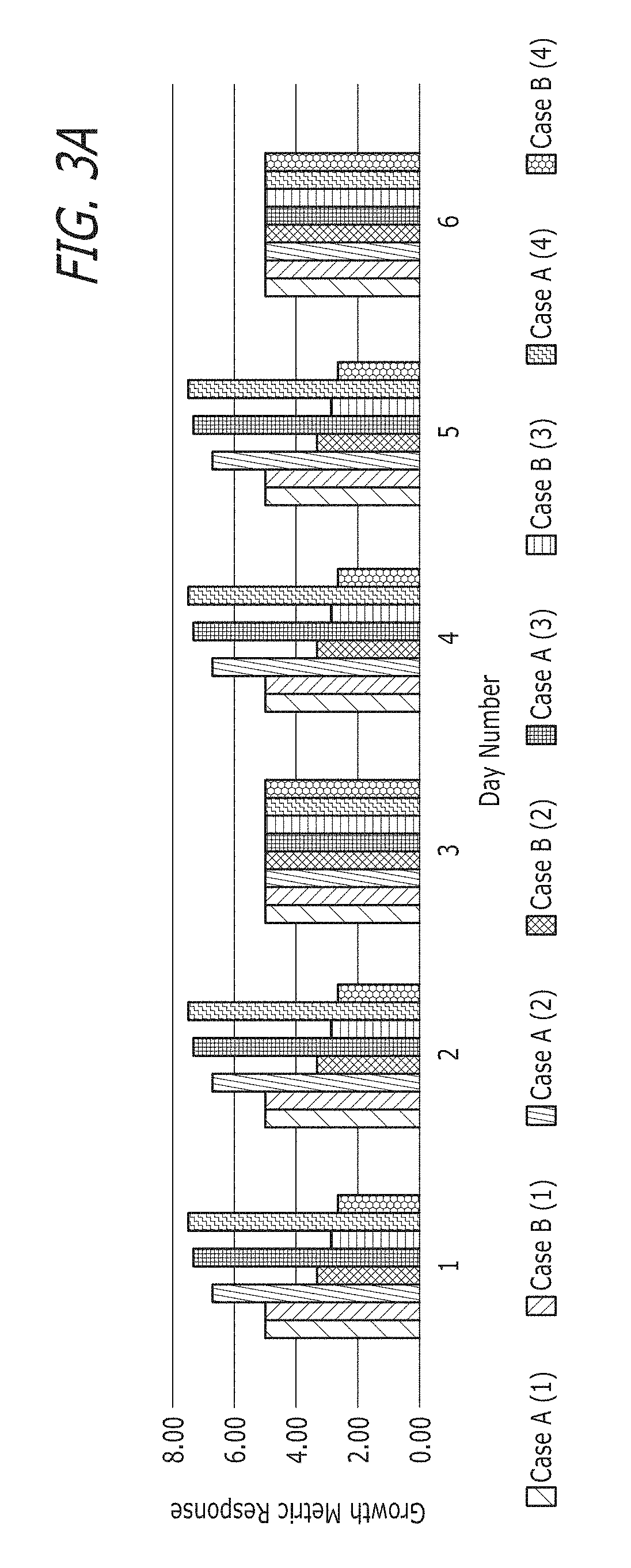Development of complex agricultural simulation models from limited datasets
a technology of simulation models and datasets, applied in the field of precision agriculture, can solve the problems of restricting the agricultural industry's ability to realize the full benefit of large-scale collection of data, and the inability to predict growth stages, so as to reduce the error rate of the model
- Summary
- Abstract
- Description
- Claims
- Application Information
AI Technical Summary
Benefits of technology
Problems solved by technology
Method used
Image
Examples
example 1
/ PART B
[0066]A variant on Part A of the first example is to use the previously-discussed ‘absolute difference’ approach instead of the ‘relative difference’ approach applied above. In this approach (Part B), the absolute difference between the situation-specific accumulated growth metric value at maturity vs. the average accumulated growth metric value at maturity across all similar situations can be (e.g.) divided by the number of days between planting and maturity. The result is an adjustment 131 that could be added to the daily growth metric that was produced by the growth ANN 123 of the previous iteration, for all of the days between planting and maturity for that specific situation, in order to make the accumulated growth metric at maturity for that specific situation match that which is desired. Once a correction ANN 128 is trained on this adjustment data 131, it will produce an absolute adjustment that can be made to the growth ANN's output for the specific combination 126 of...
example 2
[0067]The technique applied in the first example can be expanded so as to automatically develop separate ANN models of interdependent problems from a common dataset 104. For example, if the observed end-of-season data elements of the first example are changed to be the harvest date and grain moisture on that date (instead of the maturity date), it is possible to add an additional outer iteration loop that coordinates back-and-forth iteration between the development of a growth ANN 410 to simulate the pre-maturity portion of the cropping cycle, and a ‘drydown’ ANN 420 to simulate the post-maturity drying of the crop's grain. FIG. 4 is a flow diagram illustrating this process 400 of automatically developing separate models of interdependent problems from a common dataset 104 according to the present invention.
[0068]In such a situation, a simple model for working backwards from the harvest date and grain moisture to estimate the date on which the associated crop reached maturity can be...
example 3
[0070]The technique as discussed in the preceding examples uses ANNs for both the primary and corrective models 123 and 128 in the iterative model development process. While this is a powerful implementation of the technique, ANNs are not a necessary requirement for applying the general concept. Similar steps can be taken to develop models using simpler underlying models, as demonstrated by the simple illustrative example of FIG. 3. For example, it is possible to select a predictive variable 106, the time-varying values of which impact some arbitrary process to be modeled. Starting with a flat response function (i.e., a model that produces the same output irrespective of the value of the predictive input variable 106), the output values, as aggregated to be comparable with a validating data point, can be compared to the validating data point. The resulting information on differences between the predicted (output) values and the validating data point can then be assigned back to ‘buc...
PUM
 Login to View More
Login to View More Abstract
Description
Claims
Application Information
 Login to View More
Login to View More - R&D
- Intellectual Property
- Life Sciences
- Materials
- Tech Scout
- Unparalleled Data Quality
- Higher Quality Content
- 60% Fewer Hallucinations
Browse by: Latest US Patents, China's latest patents, Technical Efficacy Thesaurus, Application Domain, Technology Topic, Popular Technical Reports.
© 2025 PatSnap. All rights reserved.Legal|Privacy policy|Modern Slavery Act Transparency Statement|Sitemap|About US| Contact US: help@patsnap.com



